World of watches
THE LEGACY AND INNOVATION BEHIND THE IWC DA VINCI
UNCOVER THE STORY BEHIND THE IWC DA VINCI AND ITS KEY MOMENTS THAT SHAPED THIS ICONIC WATCH
Read Time: 3 min
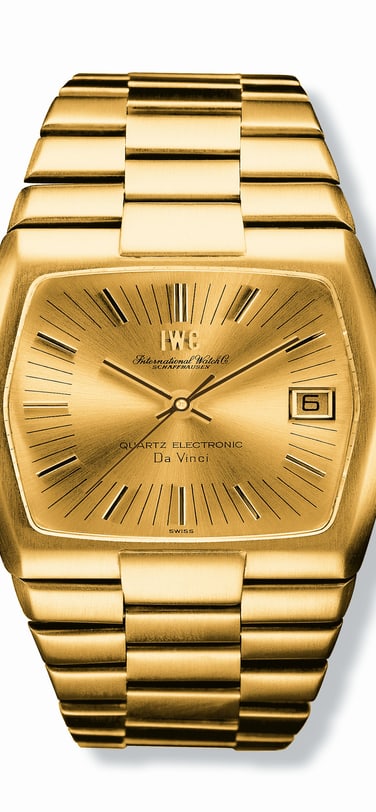
For almost 50 years, the Da Vinci has been a symbol of innovation in fine watchmaking, embodying the inventiveness of IWC’s engineers. Milestones include Switzerland’s first quartz wristwatch, Kurt Klaus’s legendary perpetual calendar, the world’s first black ceramic case, and Schaffhausen’s first in-house chronograph.
As with many IWC stories, the Da Vinci’s begins with a groundbreaking debut: in 1969, Reference 3501 became the first wristwatch featuring the Swiss ‘Beta 21’ quartz movement, set in a striking hexagonal gold case. This achievement marked the birth of a watch family that, as IWC Museum curator David Seyffer puts it, “combines the resourcefulness and inventive spirit of IWC’s engineers with a finely developed aesthetic sensibility.”
The inspiration behind the name? None other than Leonardo da Vinci, who perfectly embodies the union of beauty and technology.
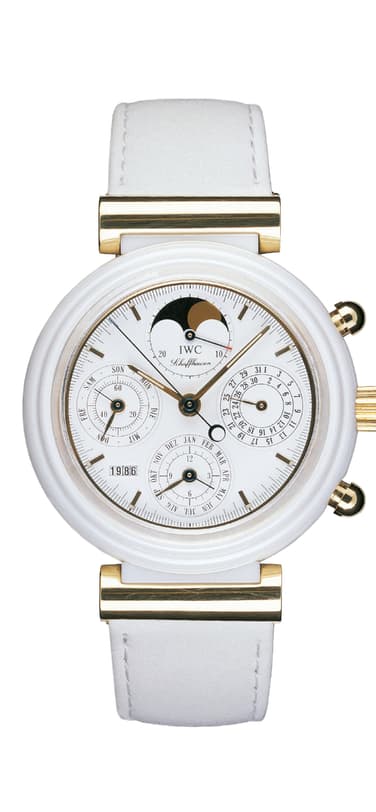
CRAFTED FOR THE AGES
Indeed, the quest for invention and improvisation runs like a thread through the story of the Da Vinci. Perhaps the most significant event was the launch of the Da Vinci Perpetual Calendar (Ref. 3750) in 1985: “At the height of the quartz crisis, IWC’s then head watchmaker, Kurt Klaus hit on the bold idea of developing a mechanical perpetual calendar,” explains Seyffer. In the course of long walks with his dogs, he mentally sketched out a new kind of calendar module that would comprise just 81 individual parts and function autonomously, with virtually no correction, until 2499.
Klaus’s design set a new standard for ease of use. The displays for the date, day, month, moon phase, and year are perfectly synchronized, so even if unworn for a time, they can all be reset together via the crown. A four-digit year display and a moon phase requiring only a one-day correction after 122 years were unprecedented. The launch at the 1985 Basel Watch Show was a close call, with Klaus finishing a working prototype just in time for its debut.
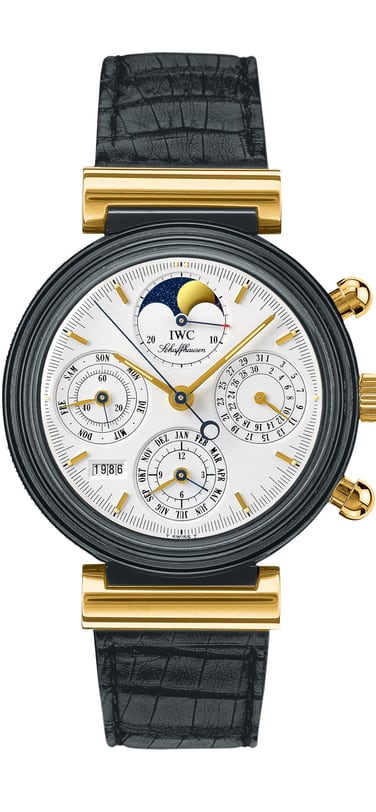
A LIGHT, SCRATCH-RESISTANT CERAMIC CASE
Just a year later, with the Da Vinci Perpetual Calendar (Ref. 3755), IWC unveiled the world’s first wristwatch with a scratch-resistant ceramic case made of black zirconium oxide. Crafting this high-tech material—also used in space travel—was a feat of engineering. “Ceramic shrinks by about a third during the sintering process, so we had to account for this volume loss in the design to achieve tolerances of mere thousandths of a millimeter,” explains Seyffer.
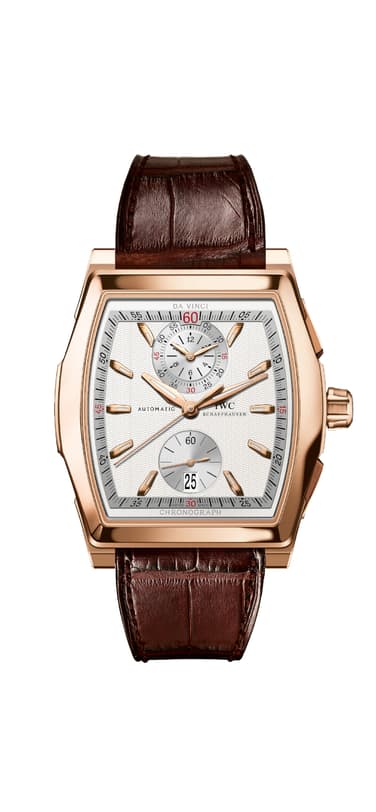
IWC’S FIRST IN-HOUSE CHRONOGRAPH DEBUTS IN THE DA VINCI
In 2007, IWC revamped the Da Vinci collection, introducing the Da Vinci Chronograph (Ref. 3764) with the brand’s first entirely in-house chronograph movement. “The 89630 caliber was the first to display elapsed minutes and hours on a single subdial, just like the time of day,” explains Seyffer. Housed in a tonneau-shaped case—Schaffhausen’s most complex to date, with 50 individual parts—it marked a major production milestone. The Reference 376601, crafted from a challenging mix of ceramic and titanium, took this innovation even further.
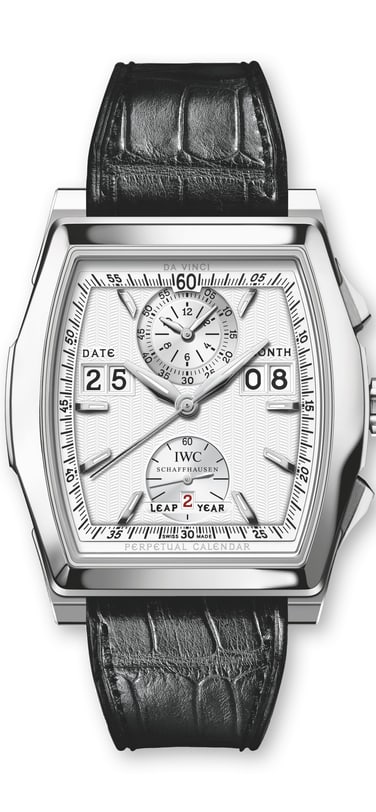
DIGITAL INNOVATION MEETS HERITAGE
In 2009, IWC introduced the Da Vinci Perpetual Calendar Digital Date (Ref. 3761), featuring a modern digital-style date and month display—a nod to the brand’s rich watchmaking history. “As early as 1884, Schaffhausen was making pocket watches with a digital display based on the Pallweber system,” says Seyffer.
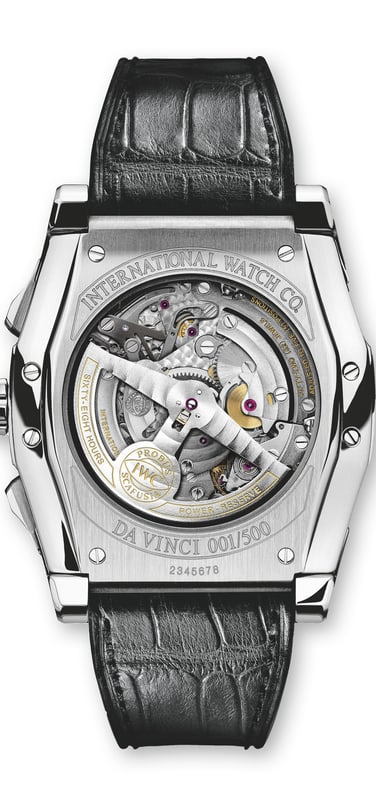
True to form, IWC continues to innovate, with new breakthroughs for 2017 and beyond. With Leonardo da Vinci’s legacy inspiring the brand, it’s clear that IWC’s most remarkable watch family will keep pushing boundaries.